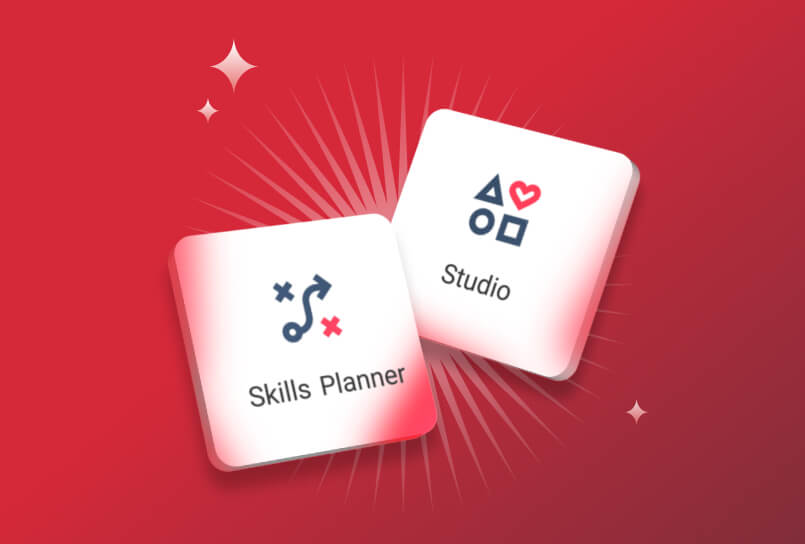4 steps HR leaders should take to promote gender equality
Learn how to level the playing field with a workforce agility platform

Employees are raising the bar when it comes to creating more equitable workplaces. Today, workers will no longer settle for jobs where they believe they might be treated unfairly or where their growth potential is limited. In fact, 67% of employees say they would leave their job if internal mobility wasn’t offered.
Now that businesses are facing a moment of collective reckoning, executives are striving to level the playing field to meet their people where they’re at. As leaders aim to strengthen their commitments to promoting diversity and inclusion (D&I), they can’t overlook the importance of gender equality.
To thrive in the new world of work, employees of all backgrounds must be empowered to achieve their full potential—and that includes people of all gender identities. With the help of a new generation of technology designed to democratize career development, executives can finally turn their visions of creating more equitable workplaces into realities.
What does gender equality mean?
Gender equality is about demonstrating fairness towards all genders. Historically, women and non-binary individuals have experienced disadvantages that have prevented them from working on a level playing field with men, even while performing the same jobs.
Gender equality in the workplace isn’t about making men, women, and people outside of the gender binary become the same; it’s about ensuring that access to opportunities, promotions, salaries, and benefits isn’t constrained by gender.
There are many different forms of gender inequality, such as unequal pay, disparity in promotions, and incidents of sexual harassment. It can also be more nuanced, like fewer opportunities for women who are mothers and higher incidences of burnout among women and people outside of the gender binary.
The benefits of promoting gender equality
Beyond it just being the morally right thing to do, companies that promote gender equality benefit from several advantages that can impact every element of their work and workplace.
Greater diversity of ideas
Like any other kind of diversity, people of different genders bring unique talents, strengths, and perspectives into the workplace that can improve collaboration and result in a more creative work environment. In fact, companies often find that gender diversity leads to greater innovation within the workplace.
Improved engagement
According to Gallup, women in managerial positions consistently outperform men when it comes to driving employee engagement. Yet, women often don’t get as many opportunities to step into these roles, since Yale research finds they’re 14% less likely to be promoted than their male counterparts each year. That means that many businesses are overlooking women who have what it takes to enhance workplace satisfaction and drive engagement.
Boost your employer brand and reputation
Employees, customers, and future hires will take note of companies that are intentional about promoting gender equality in the workplace. People with similar values will want to work for your business and customers will be eager to support a brand that promotes gender equality as part of its diversity and inclusion efforts.
4 steps HR leaders should take to promote gender equality
While most leaders strive to level the playing field, many gender equality efforts are missing the mark. Fortunately, there are a few steps that executives can take to drive lasting change.
#1. Activate internal mobility
When it comes to career progression, research sheds light on a profound difference between the way men and women search for opportunities. While men will apply for a job if they meet 60% of the qualifications, women will only apply if they meet 100%. As a result, women often count themselves out of applying for opportunities that are well within reach.
That’s why companies that are committed to leveling the playing field are harnessing talent marketplaces. The platforms match people to opportunities based on their skills and experience, in turn, opening women and non-binary employees’ eyes to professional development experiences they may not have realized they were qualified for. When Seagate launched a talent marketplace, they reported a 58% increase in the participation and assignment of women to internal positions.
#2. Launch a mentoring program
Mentoring programs aren’t just a win for the mentee; these initiatives often end up helping mentors just as much. Mentoring provides opportunities for women and non-binary employees to take on leadership positions, empowering them to see themselves as managers and role models. Research from the University of Michigan supports the notion that mentoring has benefits when it comes to enhancing gender equality at work, especially when women or non-binary executives mentor their male counterparts.
#3. Prioritize flexibility and autonomy
The pandemic has proven just how well remote work can work. Rather than sticking to traditional working models steeped in presenteeism, organizations that are committed to promoting gender equality provide flexibility in when and where employees can work. For women and non-binary people, this flexibility in work hours is often a critical enabler of retention because it allows them to maintain a work-life balance and juggle demands that may have once interfered with their professional progression.
#4. Don’t overlook coaching and well-being resources
Mentoring is a powerful initiative, but career development doesn’t have to stop at peer-to-peer advising. Organizations that are truly committed to driving lasting change are taking employee development strategies one step further by providing coaching and wellness resources to complement mentoring. To create a seamless experience, some businesses are tapping into Opportunity Hub, which creates a single destination for coaching, learning, volunteering, and well-being, all within an organization’s talent marketplace.
To learn more about what it takes to break down barriers, find out how a workforce agility platform can help you create an inclusive workplace.




